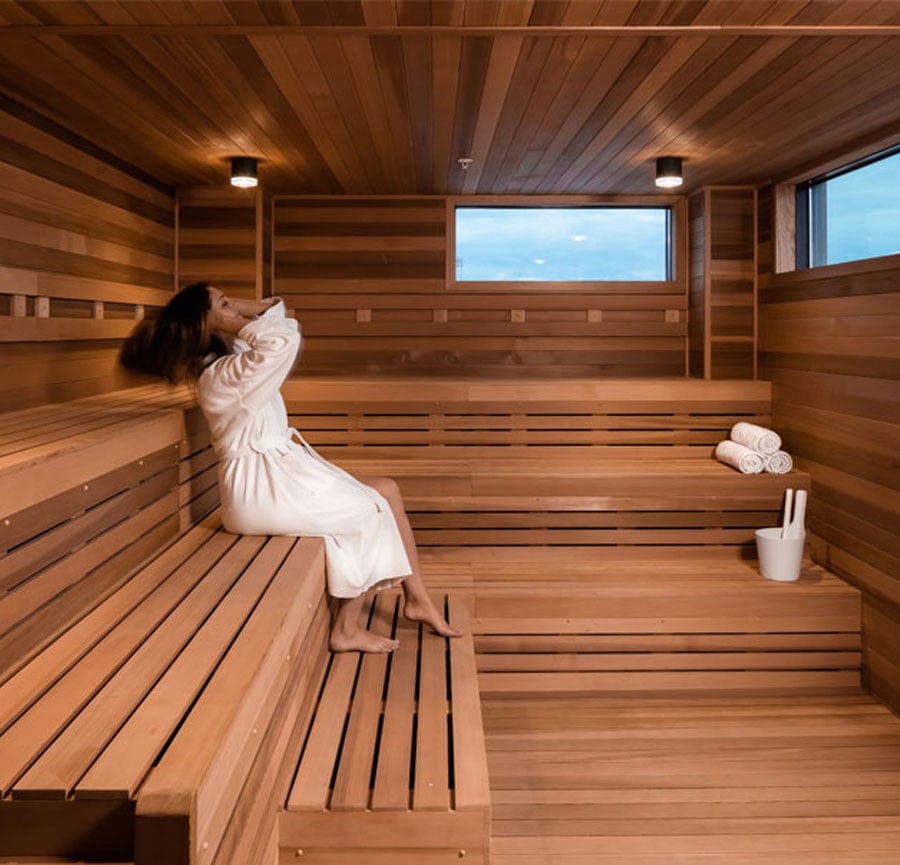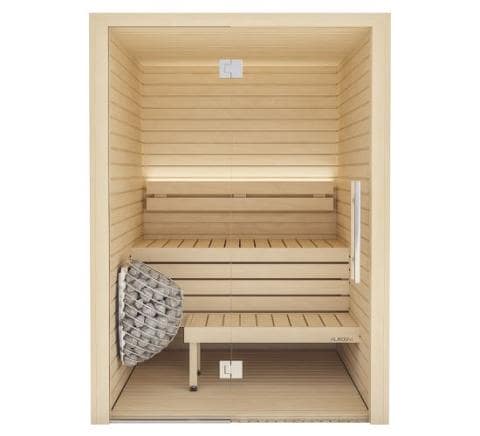The Definitive Guide for Traditional Sauna
The Definitive Guide for Traditional Sauna
Blog Article
Excitement About Traditional Sauna
Table of ContentsIndicators on Traditional Sauna You Should KnowSome Known Facts About Traditional Sauna.See This Report on Traditional SaunaFascination About Traditional Sauna
A lot of the weight shed in a sauna is water loss and is re-gained upon rehydrating. Without a question sauna can be an important part of a healthy and balanced weight loss program. To take a look at the differences in between conventional and IR saunas, I will divide these into verifiable, theoretical, and produced differences.Therefore, the most popular factor in the saunawhich goes to the ceiling directly over the sauna heateris typically between 185 and 190 F. Traditional Sauna. Claims that a standard sauna surpasses 200 F is merely not real and not relevant for electrical saunas marketed in the United States. The temperature for a far-infrared sauna is generally set between 120 and 140 F; nonetheless, unlike the traditional sauna, the objective in and IR space is not to achieve a heat
Due to this, the temperature difference is virtually unimportant, because excessive sweating causes both sauna types, however the approach of heating up the body is different. In an IR sauna the bather will certainly really feel warm and will sweat profusely, however at much lower temperatures. Therefore, if the objective is to spend longer amount of times in the sauna, the IR sauna is an excellent choice.

Traditional Sauna for Beginners
When the high temperature is accomplished, the aspects cycle on and off to preserve the high temperature. A lot of standard sauna customers delight in putting water over the rocks to produce heavy steam to increase sauna moisture degrees. The benefits of putting water over the rocks include: making the area extra comfy, moistening the nasal flows, and permitting the use of aromatherapy by blending important oils with the water.
In a far-infrared sauna, the heat waves pass through the body to successfully heat up the body and raise the body core temperature. To attain this increased temperature, Far-infrared emitters create infrared energy which is close to the exact same wavelength as that which the body normally emitsoften described as the "Crucial Range" of 7 to 14 microns), so the energy is well gotten by the body.
When the energy enters the body, it creates the body temperature to boost and eventually causes sweating. In an infrared sauna it is essential for the emitters/heaters to continue to be on virtually frequently. Given that there is no mass of rocks to retain heat, the sauna will certainly cool down if the emitters turned off.
As discussed over, the sauna bather in an infrared area wishes to place himself in front of running emitters to obtain optimal gain from the heat. The home heating time for both rooms can be very different, relying on exactly how the spaces are used. For a traditional sauna, a bather ought to permit 30-40 mins for go to the website the area to attain a desired temperature and to correctly pre-heat the rocks.
Fascination About Traditional Sauna
A well constructed sauna will commonly accomplish a temperature of 150-160 F in concerning 30-40 mins (Traditional Sauna). For hotter temperature levels, the space might need to warmth read review for a longer period. Once the area attains set temperature, the heating unit will certainly cycle on and off, generally running concerning 50% of the time. The shielded walls and the heated rocks will certainly maintain the area hot and at steady temperatures.
To some, 15 minutes was "wasted" while the infrared power heated the wood panels rather than heating a body, while others discover a pre-heated area to be more comfy and think an elevated starting temperature level is needed to begin perspiring. The length of recommended use for each area is roughly the very same (10-15 minutes per session); however, due to the lower air temperature levels and the capacity to really feel the results of infrared warm quicker than a traditional sauna, it is not uncommon for a person to spend a total of 20-30 mins in an infrared sauna.
Standard saunas tend to be bigger (therefore make use of more electrical energy) than infrared saunas, although traditional saunas are absolutely offered in one and two individual dimensions also. For a two-person traditional sauna, 5x6 or 5x7 size is most prominent. The leading bench can pleasantly seat 2 or three individuals and is also enough time to exist down during the sauna session.


The ordinary cost per kWH of electrical energy in the united state is approximately $0.11, so a 4.5 kW heating system will certainly cost roughly $.50 to run for one hour, if the heating system runs continuously for one hour. Typically a sauna heating unit will run for 75% of the first hour and 50% of succeeding hours on because the components cycle once the established temperature level is achieved.
Things about Traditional Sauna
A two person far-infrared area is normally literally smaller sized than a typical sauna, frequently regarding 4' x 4' or smaller sized. The IR heating system is usually 1.5-1.7 kW using a 120 volt 15 amp plug-in solution. Since the room can be made use of faster than a sauna room, we will presume the area is used for to of an hour consisting of warm up time.
There is a hardly ever gone over distinction in the social experience in between the two spaces. While our culture has lost some of the social advantage of the typical sauna experience, it can be extremely socially fulfilling. From family time in the sauna, to heart-felt conversations with substantial others, to sauna partiesthe traditional sauna experience can result in intimate interacting socially.
A lot of Learn More higher end infrared areas include colored light treatment, sound systems and full-glass fronts.
Report this page